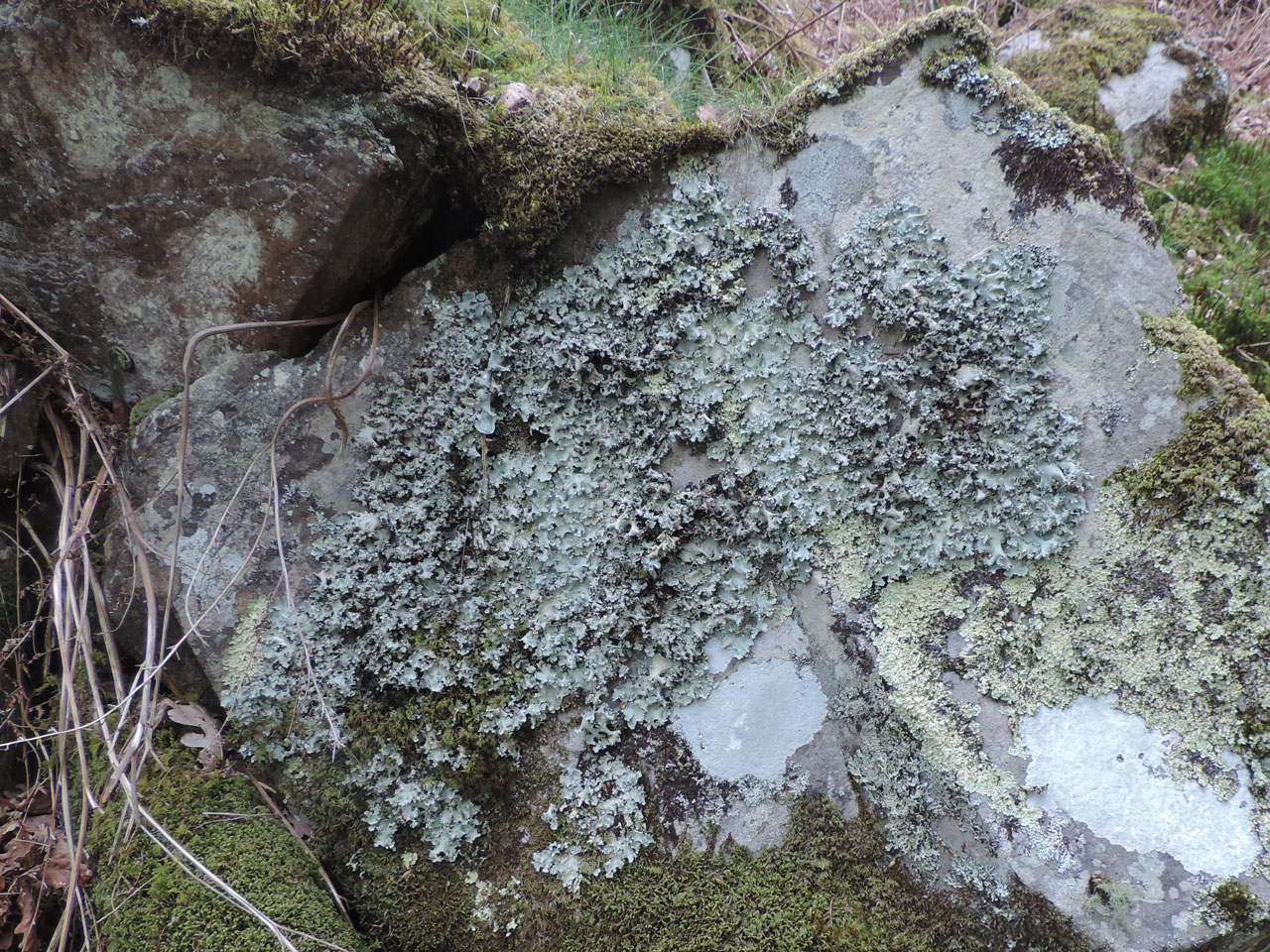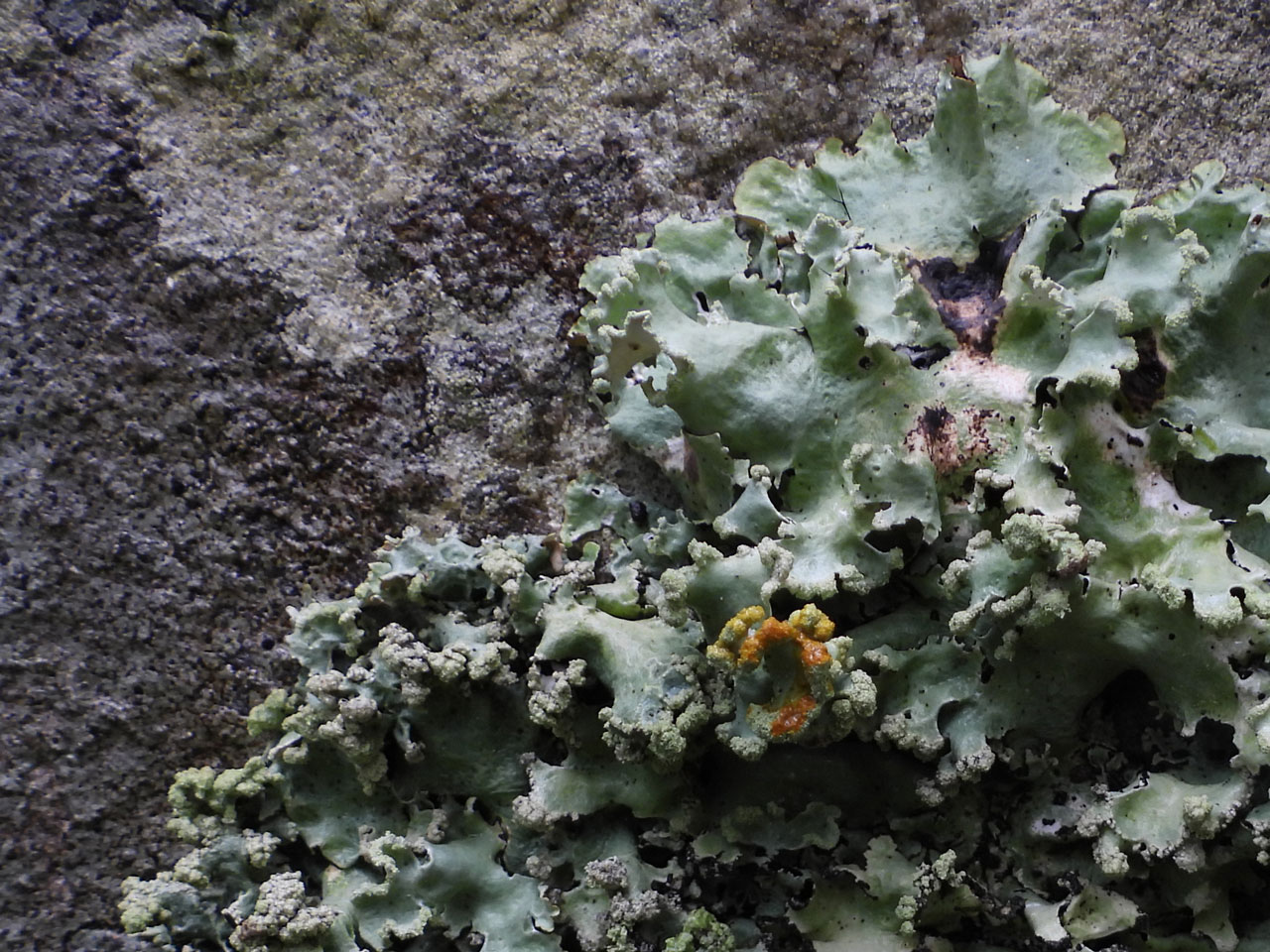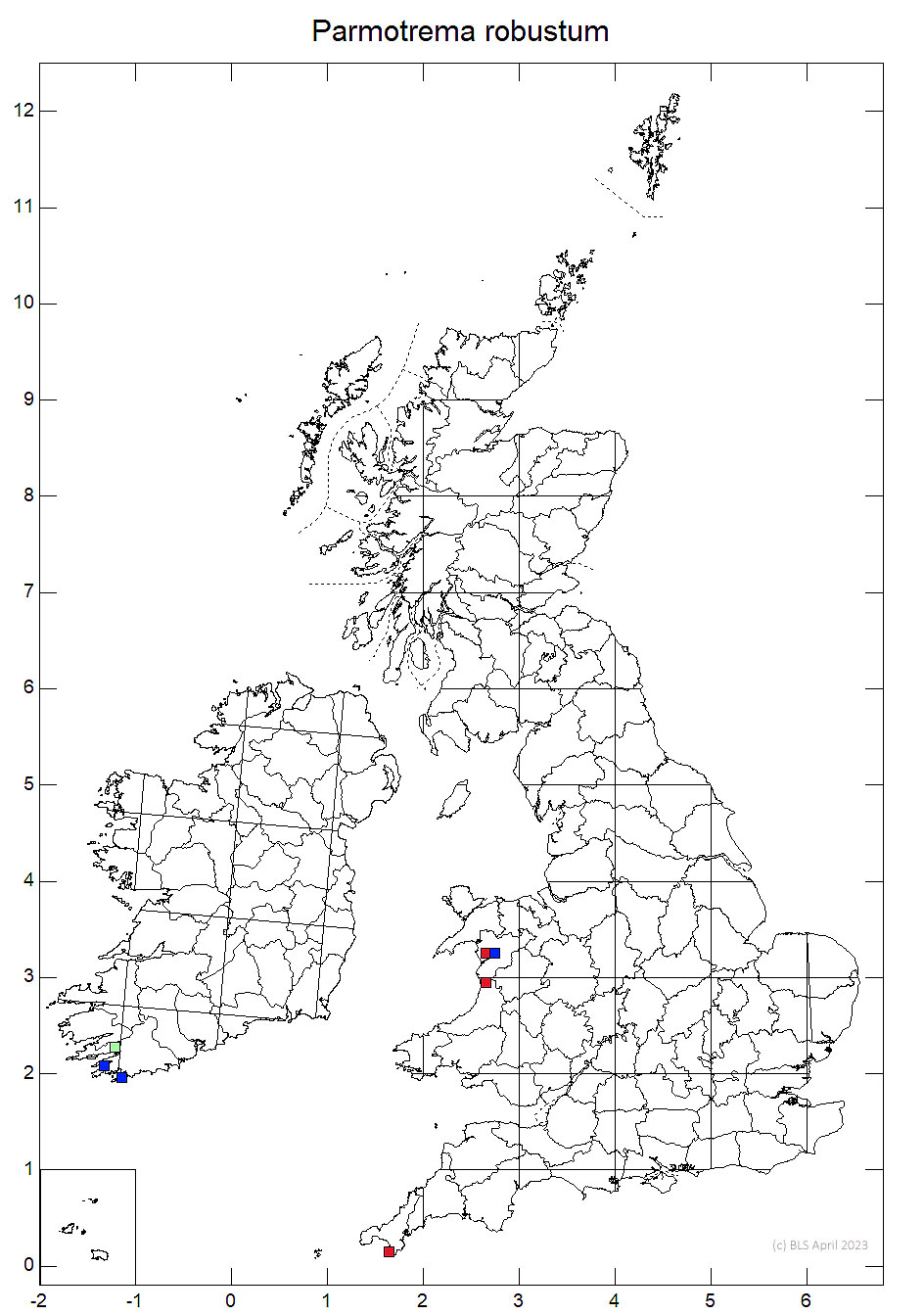A very rare lichen, currently known from only a few rocks in Wales and on the Lizard, with some old records from Ireland, potentially over looked for Parmotrema perlatum, but with larger and more elaborately cut and inrolled thalli, with the soralia often clustered on small extensions of the lobed margins. Different spot tests help confirm the species.
Like Parmotrema perlatum but with larger (5–15 mm broad), ± elaborately incised and inrolled, sparingly marginally ciliate lobes; soralia sparse, rounded and often clustered on small extensions of the incised lobe margins. Cortex: K+ yellow; medulla: C–, K+ dirty yellow or K–, Pd+ deep orange- to rust-red, UV– [atranorin, protocetraric acid (major), sometimes also fatty acids (minor)].
Most similar to P. perlatum but separated from it by the broader lobes, more elaborate-incised, sorediate and sparingly ciliate lobe margins and by the Pd+ deep orange-red medulla (protocetraric acid). See also P. arnoldii.
On Prunus spinosa and mossy rocks on heathland near coast and in rocky oceanic woodland

W. Wales, Cornwall (Lizard) and S.W. Ireland (Cork, Baltimore); very rare. P. robustum may have been overlooked elsewhere in W. and S.W. Britain as a robust form of P. perlatum, but is quite distinctive when well- developed.
A very rare species, with few known locations and individual thalli. Threatened by shade due to under management at some sites.
Britain: Critically Endangered
Wales: Section 7 species
England: Section 41 species
Cannon, P., Divakar, P., Yahr, R., Aptroot, A., Clerc, P., Coppins, B., Fryday, A., Sanderson, N. & Simkin, J. (2023). Lecanorales: Parmeliaceae, including the genera Alectoria, Allantoparmelia, Arctoparmelia, Brodoa, Bryoria, Cetraria, Cetrariella, Cetrelia, Cornicularia, Evernia, Flavocetraria, Flavoparmelia, Hypogymnia, Hypotrachyna, Imshaugia, Melanelia, Melanelixia, Melanohalea, Menegazzia, Montanelia, Nesolechia, Parmelia, Parmelina, Parmeliopsis, Parmotrema, Platismatia, Pleurosticta, Protoparmelia, Pseudephebe, Pseudevernia, Punctelia, Raesaenenia, Tuckermannopsis, Usnea, Vulpicida and Xanthoparmelia. Revisions of British and Irish Lichens 33: 1-98.
Text by N A Sanderson, based on Cannon et al (2023).




